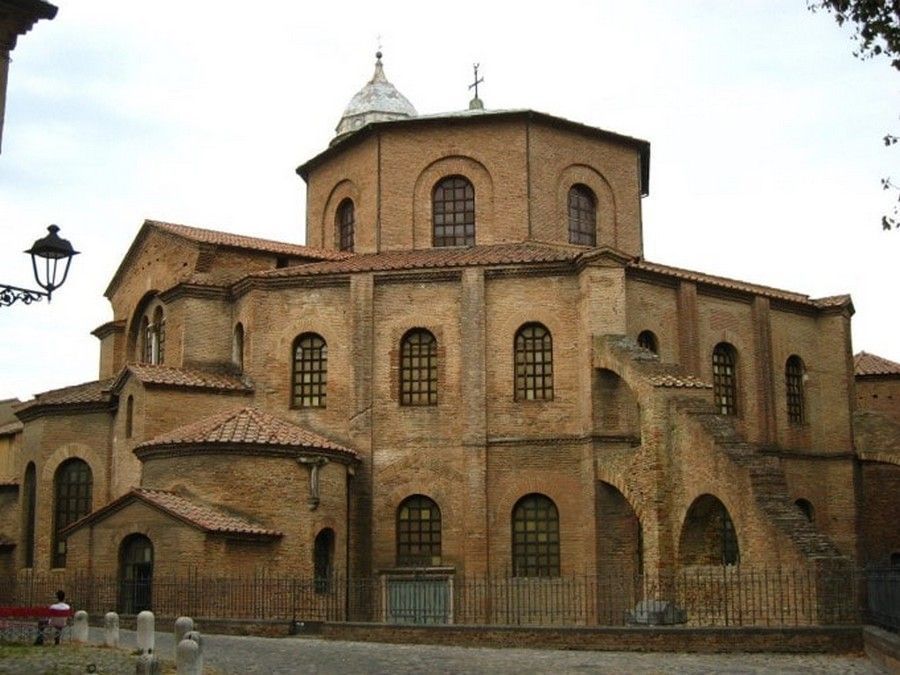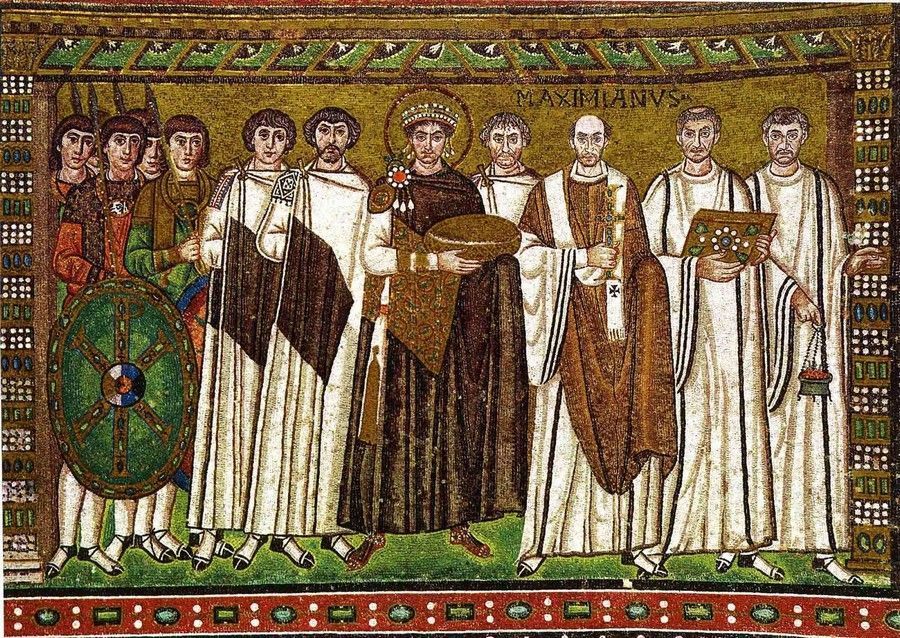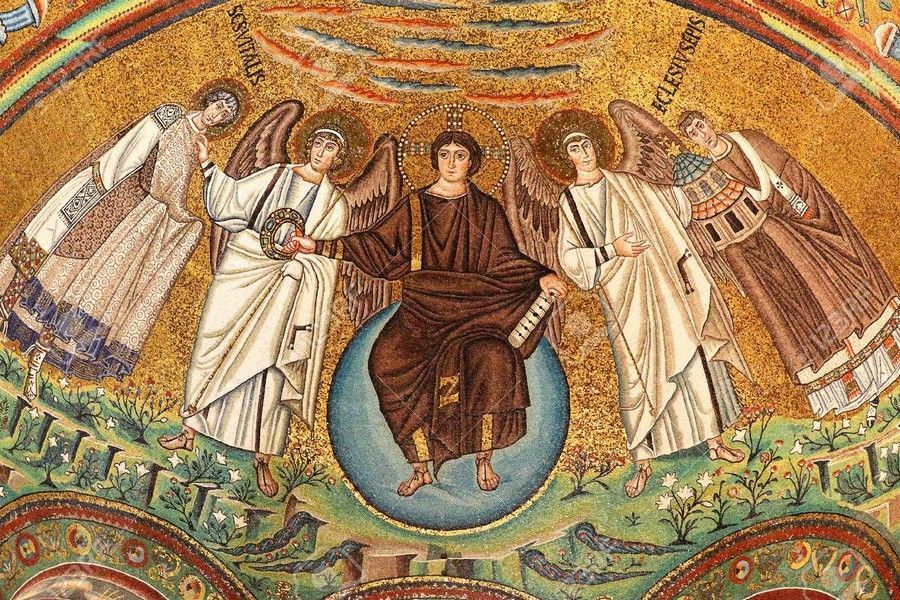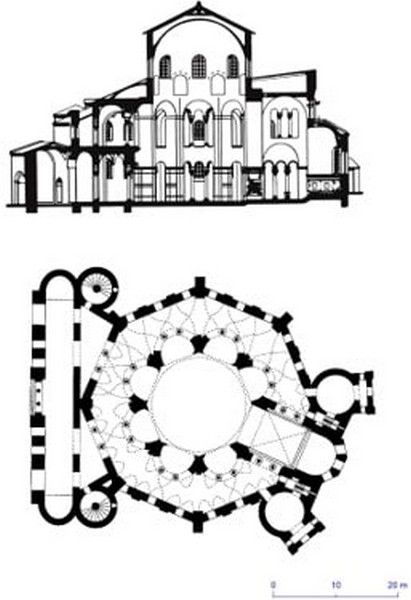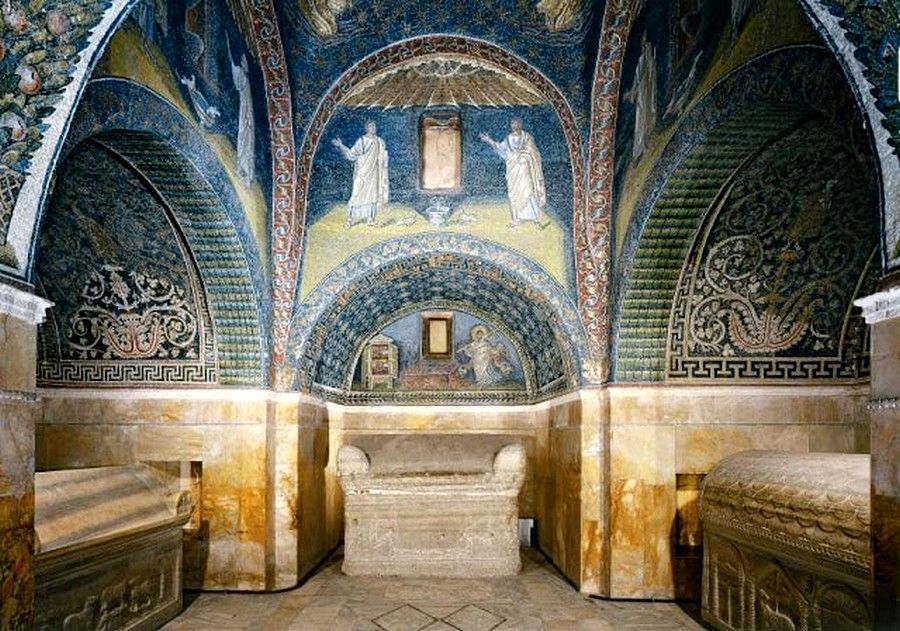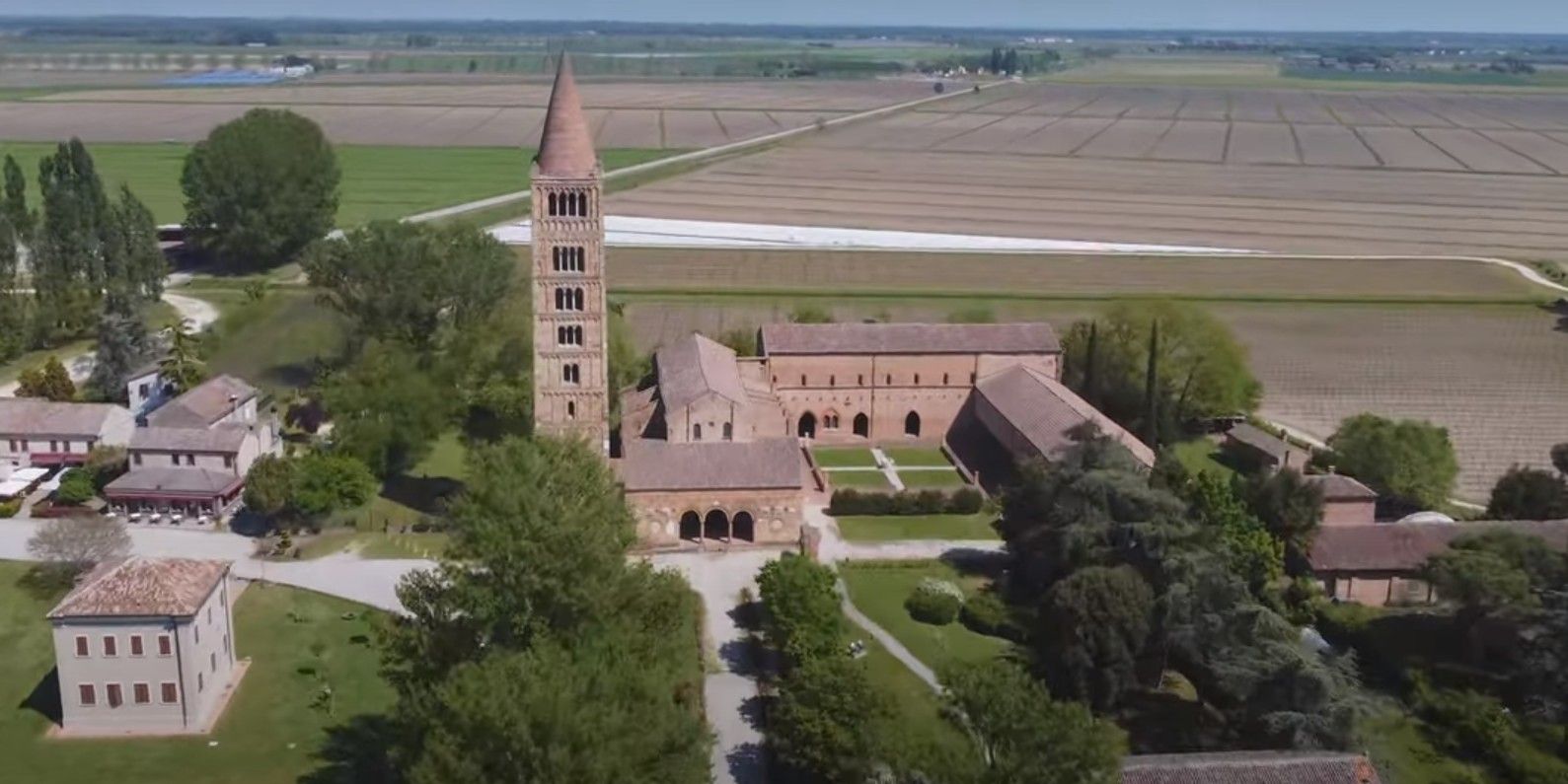SAN VITAL DE RAVENA
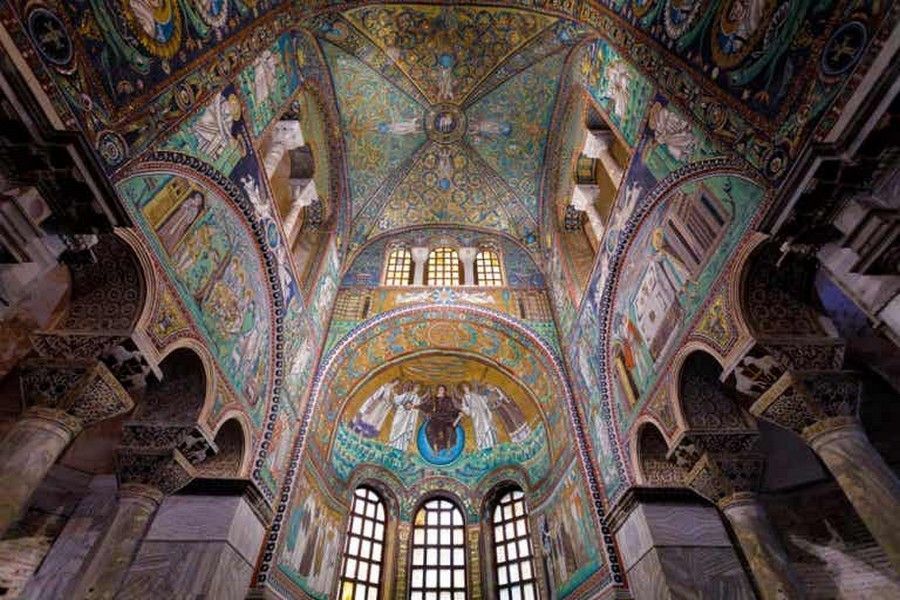
Historic environment
The church of San Vitale in Ravenna is one of the most important temples of Byzantine art, and like others in the same city, it was reformed at the express wish of Emperor Justinian based on previous constructions, with the  object to accelerate the integration of the conquered territories to the Byzantine empire.
object to accelerate the integration of the conquered territories to the Byzantine empire.
The work was financed with the money of the wealthy banker Juliano Argentario, of Greek origin, and was supervised by the city’s archbishop, Maximian, who consecrated it in the year 547. All these characters appear in the mosaic decoration that was made between the years 546-548.
This temple began to be built in the year 527, when Ravenna still belonged to the Ostrogoths, later after the Byzantine conquest, it was decided that it would be the official temple for the governor of the western region of the empire, the so-called Exarchate of Ravenna.
The entire building was designed respecting the elements of the ancient liturgical tradition, in which the separation between men and women was required during ceremonies and acts of worship, also including the possibility that high hierarchies could attend, following a strict protocol, symbolically reflected in the mosaics.
Description
On the outside, red brick is used, which can surprise you with its simplicity in contrast to the sumptuousness of the interior. The long, thin bricks are separated by rather thick mortar joints. Its plan is  octagonal, with an ambulatory covered with a groin vault. In the central part and taking advantage of the central pillars that support the central dome, successive exedras are articulated that create a spatial rhythm of curved and straight elements. At the entrance there is a transversal narthex with two towers on the sides that allowed access to the “matroneum” on the upper floor, intended for women.
octagonal, with an ambulatory covered with a groin vault. In the central part and taking advantage of the central pillars that support the central dome, successive exedras are articulated that create a spatial rhythm of curved and straight elements. At the entrance there is a transversal narthex with two towers on the sides that allowed access to the “matroneum” on the upper floor, intended for women.
Outside, a correct projection of volumes stands out, with the same sense of verticality and ascending rhythm, from the chapels to the central roof. And inside, the most characteristic thing is the sensation of weightlessness in the whole complex, it is in this sense where the role of the dome acquires greater importance.
MOSAICS IN THE APSE
The decoration of this church is mainly based on mosaics that show scenes, both from the Old and the New Testament, in which the main message is that of God saving men through the Eucharist.
In the shell of the apse there is a large composition, in the center of which is Jesus, represented young and beardless, seated on a large blue sphere and dressed in imperial purple. Flanking his figure are two archangels, who introduce him to Saint Vital and Bishop Ecclesio, both identified by the inscriptions that appear above his head. Saint Vital is shown receiving a crown from Jesus, while Bishop Ecclesio is shown presenting a model of this church to Jesus. The scene takes place in a garden and the sky appears golden with red and blue clouds.
In the mosaics found on the shell of the apse, two angels are represented holding a medallion in which we can see the letter alpha and, on its sides, the cities of Bethlehem and Jerusalem.
IMPERIAL MOSAICS
The imperial mosaics appear located in the lower part of the side walls of the apse. On the left, < Justiniano and on the right Theodora. The bodies of these characters match a green and gold background, contrasting with the purple color of his clothes. Justiniano appears surrounded by a series of people who were important for the construction of the church. To his left Maximian, with his name inscribed above him, holds a cross of precious stones, as a symbol of his episcopal dignity. And to the right of Maximiano appear two representatives of the clergy carrying the objects proper to the Eucharistic celebration. To the left of the emperor we can see two anonymous magistrates dressed in white, with tunics typical of political officials. And finally closing the procession, a multitude of soldiers, one of them appears holding a green shield with the image of the Crismón, symbol of the armies of the empire.
Justiniano and on the right Theodora. The bodies of these characters match a green and gold background, contrasting with the purple color of his clothes. Justiniano appears surrounded by a series of people who were important for the construction of the church. To his left Maximian, with his name inscribed above him, holds a cross of precious stones, as a symbol of his episcopal dignity. And to the right of Maximiano appear two representatives of the clergy carrying the objects proper to the Eucharistic celebration. To the left of the emperor we can see two anonymous magistrates dressed in white, with tunics typical of political officials. And finally closing the procession, a multitude of soldiers, one of them appears holding a green shield with the image of the Crismón, symbol of the armies of the empire.
In the opposite panel and symmetrical to the previous one, the empress crowned by a headdress of great beauty and richly adorned, appears anticipated by two dignitaries holding a chalice, and in the lower part of her mantle the three wise men can be seen bringing gifts to the child . On the left side we can see a fountain, a symbol of divine grace. Theodora appears guarded by a canopy, which manifests her divine nature and protects her from the earthly world. This panel is elaborated in a more delicate way, even, than Justiniano’s, in such a way that the women appear adorned with garments of great beauty and offers a wider color palette than is normal in this type of work.
Finally, the frames of the panels are richly decorated, decorated with figures reminiscent of oriental art, thus giving the impression of looking like rugs hanging from the walls of the temple.
Monica Blanco for URBS REGIA
Other interesting information
Hours: 09:00 a.m.- 06:45 p.m. Every day.
From June to September: 10:00 a.m.- 4:45 p.m.
From Monday to Thursday. October and November 10:00 a.m.- 4:45 p.m.
Every day. November to February
Entrance fee: 10.50 euros
Bibliography
Beckwith, J., Arte paleocristiano y bizantino”, Editorial Cátedra, 2007.
Bustacchini, G., Rávena. Los mosaicos, los monumentos, medio ambiente. Ediciones Salbaroli, Rávena.
Krantheimer, R., Arquitectura paleocristiana y bizantina. Editorial Cátedra, 1998.
Portals




